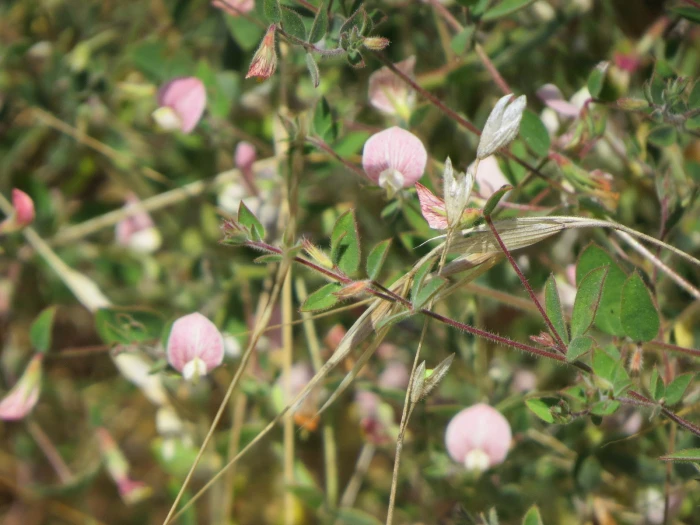American Bird’s-Foot Trefoil
(Acmispon americanus)
American Bird’s-Foot Trefoil (Acmispon americanus)
/
/

Garth Harwood
CC BY 4.0
Image By:
Garth Harwood
Recorded By:
Copyright:
CC BY 4.0
Copyright Notice:
Photo by: Garth Harwood | License Type: CC BY 4.0 | License URL: http://creativecommons.org/licenses/by/4.0/ | Rights Holder: Garth Harwood | Publisher: iNaturalist | Date Created: 2019-07-21T14:54:25-07:00 |























Estimated Native Range
Climate Requirements for Elkhart, Indiana
| This Plant | Your Site | Plant Suitability for Your Location | ||
|---|---|---|---|---|
| • Precipitation | 5" - 115" | 37" | Aquatic | Aquatic |
| • High Temp. | 40°F - 106°F | 85°F | Your summer temperatures are normal for this plant. | Excellent |
| • Low Temp. | -9°F - 49°F | 16°F | Your winter temperatures are normal for this plant | Excellent |
This plant may not grow well at your location - your precipitation is too high.
Summary
Acmispon americanus, commonly known as American bird’s-foot trefoil or Spanish clover, is an annual herb native to a variety of habitats including grasslands, open woodlands, and chaparral regions across California, the Western United States, Western Canada, and northern Mexico. It typically grows up to 10 inches tall and has a hairy, upright form. This species produces clusters of pale pink to cream flowers from late spring to early summer, which are attractive to pollinators such as bees. The foliage is fine-textured, adding a delicate appearance to the plant.
American bird’s-foot trefoil is valued for its drought tolerance and ability to thrive in poor, well-drained soils, making it suitable for xeriscaping and restoration projects. It is also used in wildflower mixes for meadows and naturalized areas. In cultivation, it requires minimal maintenance, thriving in full sun and tolerating a range of soil types, provided they are well-drained. While not commonly used in formal garden settings, its resilience and adaptability can make it a useful plant for erosion control on slopes and disturbed sites.CC BY-SA 4.0
American bird’s-foot trefoil is valued for its drought tolerance and ability to thrive in poor, well-drained soils, making it suitable for xeriscaping and restoration projects. It is also used in wildflower mixes for meadows and naturalized areas. In cultivation, it requires minimal maintenance, thriving in full sun and tolerating a range of soil types, provided they are well-drained. While not commonly used in formal garden settings, its resilience and adaptability can make it a useful plant for erosion control on slopes and disturbed sites.CC BY-SA 4.0
Plant Description
- Plant Type: Herb
- Height: 0.5-2 feet
- Width: 0.5-1.5 feet
- Growth Rate: Moderate
- Flower Color: Yellow
- Flowering Season: Spring, Summer
- Leaf Retention:
Growth Requirements
- Sun: Full Sun, Part Shade
- Water: Low
- Drainage: Fast
Common Uses
Drought Tolerant, Low Maintenance, Street Planting
Natural Habitat
Native to grasslands, open woodlands, and chaparral regions
Other Names
Common Names: Deervetch, American Lotus, American Deer-Vetch, Spanish Clover, Prairie Bird’s-Foot Trefoil, Prairie Deer-Vetch, Prairie Trefoil, Western Prairie Trefoil
Scientific Names: Acmispon americanus, Hosackia americana, Lotus americanus, Trigonella americana
GBIF Accepted Name: Acmispon americanus